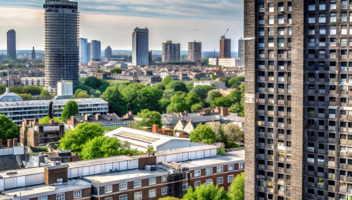The Housing (Cladding Remediation) (Scotland) Bill has been passed by the Scottish Parliament, albeit we are still waiting for confirmation as to when it will come into force.
As expected, the bill establishes a Cladding Assurance Register; gives the Scottish Government wide-ranging powers to assess cladding safety and organise repairs; and provides for the responsible developers scheme to be created under separate secondary legislation.
Meantime, a recent consultation has laid the path for the introduction of a Scottish Building Safety Levy – a tax on developers to raise funds to help fix building safety issues, which would apply to the construction of new residential buildings. Legislation is expected to follow which will give the Scottish Parliament powers to introduce such a levy.
Details of the responsible developers scheme and the Scottish Building Safety Levy and how these will operate, are to be developed through further consultation and legislation. Both will be of much interest to those working in the housing sector.
Housing (Cladding Remediation) (Scotland) Bill
As we have reported previously, the bill applies to multi-residential domestic buildings built or refurbished between 1 June 1992 and 1 June 2022; which stand 11 metres or more above the ground; and incorporate some form of external wall cladding system. It gives the Scottish Ministers substantial powers to assess if the cladding on such buildings is safe, via a “single-building assessment” or “additional work assessment”. (The latter is where a single-building assessment has been carried out, but it is required as a result of additional information coming to light. It is not clear what such additional information could be, however this raises the possibility that developers might have to return to buildings where work has been completed following a single-building assessment.) Where it is not, the Scottish Ministers may organise remediation works and can require occupiers to evacuate whilst those works are being carried out, or where there is a substantial risk to life. It also establishes the Cladding Assurance Register where such assessments and remediation works will be recorded, including the assessment dates, what works if any are required and what works if any are carried out etc. The bill currently awaits royal assent to become an act of the Scottish Parliament and a date for it coming into force.
Scottish Responsible Developers Scheme
The key part of the legislation from a developer’s perspective is the Responsible Developers Scheme (“RDS”), which will set conditions for developers to be members and to encourage remediation works to be undertaken. As set out in our previous blog following the initial publication of the draft bill, the devil will be in the detail. There is still no proposed draft RDS for review.
The bill provides for the establishment of an RDS – or more than one. It is presumed that this is to address concerns over who will be eligible to join the scheme. In England, the UK Government introduced a profit threshold for becoming a member of the Responsible Actors Scheme. SMEs strongly voiced their concerns during the consultation process as to how remedial works would be financed. They flagged that in England, SMEs are currently not members of the Responsible Actors Scheme. It is also worth noting that there were proposed amendments to the bill in Scotland which sought (i) to introduce a £10m threshold (albeit it was not articulated how this figure was to be calculated), and (ii) to make reference to an annual turnover above a level specified in the regulations. However, neither of these amendments were approved in the bill which was passed.
Meantime, there is an obligation in the bill for the Scottish Ministers to consult before making secondary legislation for the RDS, which is awaited with interest.
Building Safety Levy
As part of its radical overhaul of building safety, in 2021 the UK Government proposed the Building Safety Levy in England. This levy (also referred to as the “Gateway Two levy”), is to apply to developers of residential buildings and is designed to raise revenue for replacement of defective cladding and remediating any other historical building safety defects. The levy’s target is £3 billion, to be raised over 10 years or more. The Building Safety Levy in England is not yet in force, but provision for it sits in the Building Safety Act 2022 (section 58). There have been a number of consultations on the proposed details of its operation, which are still to be finalised, with secondary legislation to follow.
In September 2023, the Scottish Government confirmed it would seek the transfer of powers to introduce a new tax in Scotland, to mirror the Building Safety Levy for England. A consultation followed, seeking the devolution of tax powers to introduce a Scottish Building Safety Levy to the Scottish Parliament. It did not cover the potential design or operation of such a levy. The consultation closed on 19 February 2024. HM Treasury has now published the UK and Scottish governments’ response here. That response says:
- the majority of responses were in support of devolving tax powers to the Scottish Government for a Building Safety Levy;
- given the similar challenges relating to remediating buildings fitted with unsafe cladding, the UK Government agrees that extending equivalent powers to the Scottish Government will allow it to address this issue;
- both governments acknowledge concerns that a Scottish Building Safety Levy could have an impact on the supply and price of new homes and on the potential cumulative burdens faced by those operating in the residential property development sector. However, modelling for the Building Safety Levy in England suggests that it will have a marginal impact on land prices, rather than increasing new property prices;
- further, the consultation produced no evidence which would suggest devolving the proposed tax power would impose a disproportionate negative impact on UK macroeconomic policy or impede the single UK market in house building; and
- the introduction of an equivalent power for a Scottish Building Safety Levy would help to achieve the objectives set out in the UK Government’s Command Paper which ultimately informs the decision on whether to devolve a power, plus the urgency of protecting the interests of those affected by unsafe residential buildings, advances the argument for acting on this decision now.
Therefore, the consultation concludes, the UK Government is willing to proceed with the devolution of the power to introduce a Building Safety Levy and the Scottish Government is willing to receive this power.
The next steps are that the UK Government will propose legislation to allow the Scottish Parliament to legislate for the Scottish Building Safety Levy. The Scottish Government says details of how the Scottish Building Safety Levy will operate will be developed through consultation and liaison with the UK Government and housebuilding sector. Questions arise about those details such as:
- the effect the Scottish Building Safety Levy will have upon developers;
- how it will strike the balance between enhancing building safety and the financial impacts;
- whether it will diverge from the approach of the Building Safety Levy in England.
Once again, the devil will be in the detail and developers will be watching closely.
The Building Safety Group
Our Building Safety Group is comprised of specialists from practice areas across the firm, including construction and projects, real estate, health and safety and banking. If you require assistance on building safety maters or would like to discuss the policy and legislative landscape and how it does or may affect your business, get in touch with us.
Written by

Jane Fender-Allison
Knowledge & Development Lawyer and Mediator
Construction
Related News, Insights & Events

Courts provide guidance on “reasonability” in compensation on termination recovery
A new decision from the Privy Council has provided some guidance on the limits of provisions around the recovery of supply chain costs upon termination for convenience or employer default.

Knowing where you stand is key for agricultural businesses navigating IHT changes
The inheritance tax (IHT) changes scheduled to be introduced in April 2026 are far reaching and of concern to all business owners, but none more so than those in the agricultural industry.

UK government’s response to Grenfell inquiry phase 2 – 10 takeaways
On 26 February 2025, the UK Government published its much anticipated 80-page response to the Phase 2 Report of the Grenfell Tower Inquiry, published in September 2024.






